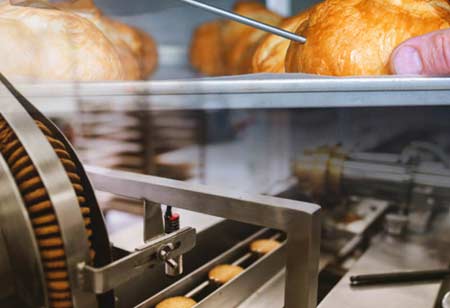Thank you for Subscribing to Food Business Review Weekly Brief
Modern Food Processing Methods
Food processing can be called a science-based industry requiring a deep understanding of chemistry,

By
Food Business Review | Tuesday, August 10, 2021
Stay ahead of the industry with exclusive feature stories on the top companies, expert insights and the latest news delivered straight to your inbox. Subscribe today.

Extrusion is a procedure in which mixed ingredients are forced through an opening to form an ongoing shape that can then be cut according to size using a blade. This method helps efficient mass food processing that can be fastly cut into size once processed.
FREMONT, CA: Food processing can be called a science-based industry requiring a deep understanding of chemistry, microbiology, and the physical properties of many foods and agricultural products. It also needs the ability to design and manufacture equipment capable of processing and packaging this food in huge quantities.
Advanced Food Processing Methods
Few industrial food processing methods (such as conveyorized ovens) are scaled-up versions of conventional food processing methods even though the innovations convenient to industrial-scale food processors have begun completely new food processing possibilities.
Flash Freezing, Freezing, and Freeze Drying: Freezing increases the freshness and shelf life of many foods, and techniques like flash-freezing aid in preparing food at high speeds and quantity.
Irradiation: Reveling food to ionizing radiation will help control insects and other pests, increase food safety, and slow down the sprouting of plant products.
Pasteurization: Pasteurization is a process for destroying potentially dangerous microorganisms that Louis Pasteur developed in 1864. Food is speedily heated and later cooled.
High-Pressure Processing: Also called pascalization, the procedure demands processing food under high-pressure conditions, killing many bacteria and increasing the product's shelf life. The energy capability, reduced processing time, and lack of additives make this method appealing. This relatively new technique, invented in the 1990s and is still being refined, was first used commercially in the 1990s.
Extrusion: Extrusion is a procedure in which mixed ingredients are pushed through an opening to form a continuous shape that can then be cut into according to size using a blade. This technique enables efficient mass processing of food that can be quickly cut to size once processed.
Modified Atmosphere Packaging: Instead of air, a certain gas may be mix used within a container to slow spoilage, extend shelf life, and improve food safety.
Chemical Additives: Antioxidants, in addition to vitamins, aid keep oil from being rancid. In addition, emulsifiers prevent items like salad dressing from splitting in the package into oil and water.






